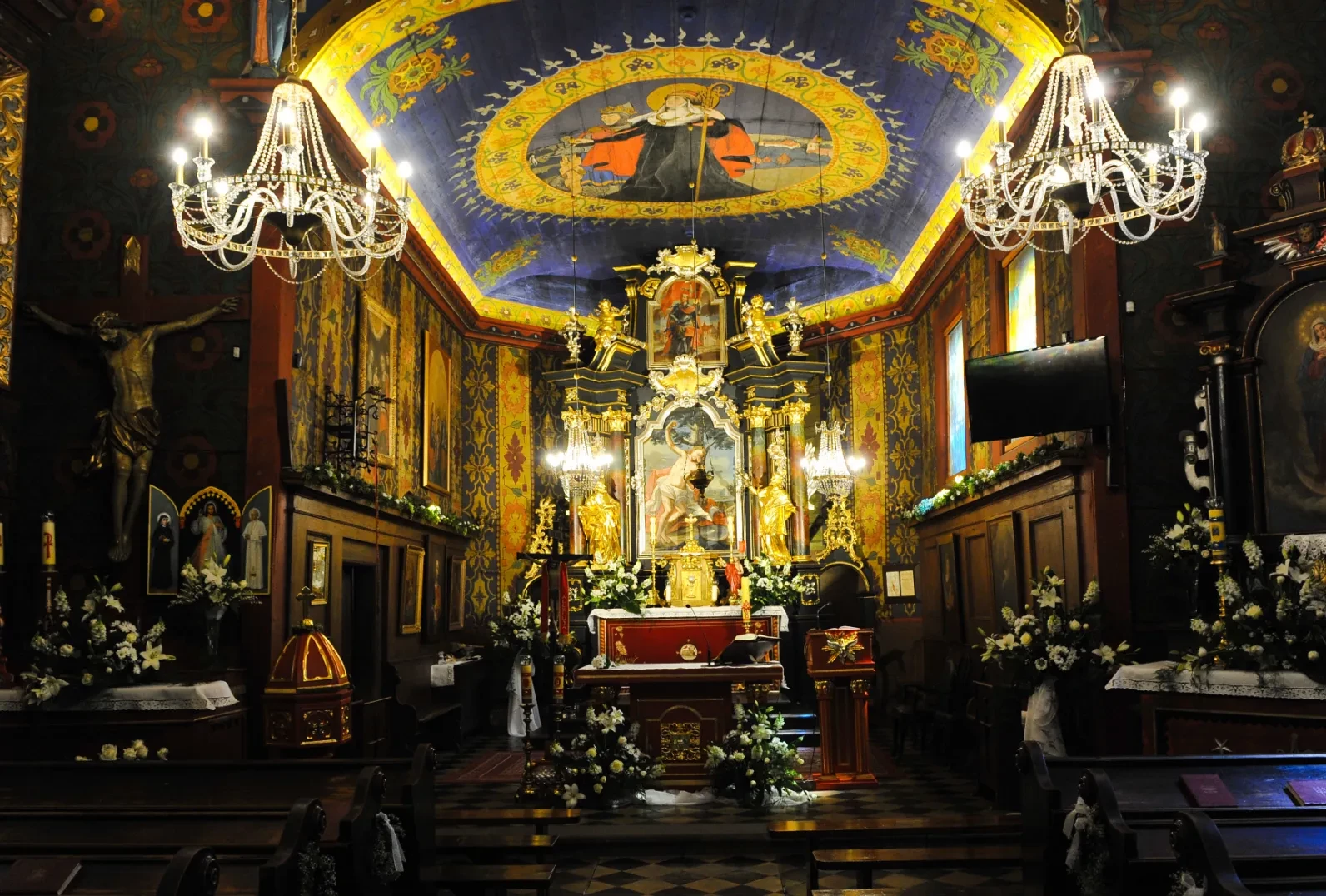Cookies required for the correct display and operation of the site.
On the steep slope of Babina Hill in Wieliczka, surrounded by centuries-old trees, stands a wooden church dedicated to St Sebastian. This inconspicuous church, however, has a centuries-old history and a beautiful interior, which is worth a look to see its uniqueness.
The mysterious history of the temple
Legend has it that, on the site of today's St. Sebastian's Church in Wieliczka, there was a pagan temple. It was dedicated to the goddess Leda and cared for by priestesses-women who ensured that an eternal fire burned here. Each of them was on duty for a whole year, unable to leave her place. At the end of the 12 months, in spring, the custom required them to find a successor. They went from house to house in search of suitable girls. If a young woman could not redeem herself, she had to perform a year's service with the goddess.
Interestingly, the old customs were not entirely forgotten. In spring, around Easter, a Siuda Baba celebration is held in the nearby village of Lednica. A soot-smeared man with a potato or chestnut necklace - dressed as a woman and with a whip in his hand - visits the houses of the inhabitants, accompanied by a chimney sweep and krakowiakas in folk costumes.
A miracle during the construction of the church
Before St. Sebastian's Church was built in the middle of the 16th century, Wieliczka was ravaged by a cholera epidemic. At that time, the dead were buried in a cemetery on Lednickie Hill, far away from the town. When no protective measures taken helped to stop the epidemic, the desperate inhabitants vowed to build a church as a votive offering if the plague could be stopped.
The miracle happened and the people did not forget their promise. They built the temple close to where the dead of cholera were buried. Work began in 1581. A year later, Sebastian Lubomirski, the Cracow magistrate, leased Lednica. It was he who completed the construction of the church and it was given a patron saint, St Sebastian, to commemorate him. The consecration of the church took place on 29 June 1598. It was performed by Cardinal Jerzy Radziwiłł.
From a modest church to a charming place
A square-shaped, wooden larch church - modest and simple, with a single nave - has expanded over the years and been enriched with interesting features. Initially, it served as a branch church for the inhabitants of the surrounding villages and the miners of Wieliczka.
Over time, the church was enlarged and its furnishings enriched. In 1744, an organ made by the Cistercian Elias Wykuszewski appeared in it. A bell tower with a lantern was built at this time. The 200th anniversary of the church's consecration brought a major expansion. Three altars were funded:
- the main one with the picture of the patron saint, St Sebastian,
- the two side ones with the crucifix and the picture of the Virgin Mary painted by Florian Cynk.
During the partition period, St Sebastian's Church was put up for auction. It was bought by the city and some of the furnishings of the demolished St Clement's Church were transferred to it. In the following years, a new parish church was built and the wooden church fell into oblivion for another 100 years.
Its present shape is due to the Church Restoration Committee, which was formed in the early 20th century. Urgent renovation work was carried out, and the interior of the church was decorated in 1906 by the famous painter Włodzimierz Tetmajer. He is the author of the fabulously colourful polychrome, which depicts, among others, St. Sebastian in the Slavic oak forest and St. Kinga with the panorama of Wieliczka.
The stained-glass windows of the church were designed by the nephew of Jan Matejko himself, Stanisław Matejko. The renovated church was consecrated on 29 September 1906 by Bishop Anatol Nowak. Today, the Millennium Monument stands in front of the temple as a votive offering. The most valuable elements of the furnishings - paintings - have been restored and transferred to the Archdiocesan Museum in Kraków.
See with your own eyes the temple that the then Cardinal Karol Wojtyla, the future Pope John Paul II, described with the words: ‘What a lovely place!’.
